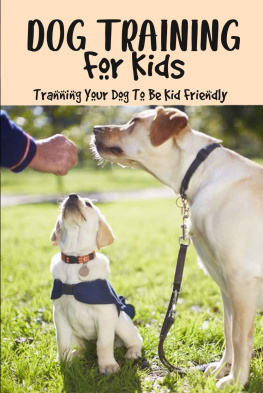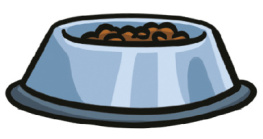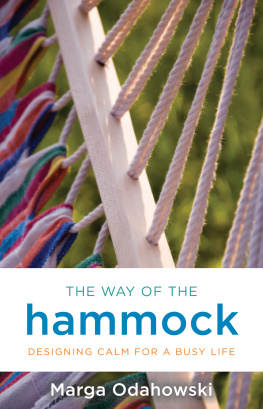Hammock - Dog Training For Kids: Tranning Your Dog To Be Kid Friendly
Here you can read online Hammock - Dog Training For Kids: Tranning Your Dog To Be Kid Friendly full text of the book (entire story) in english for free. Download pdf and epub, get meaning, cover and reviews about this ebook. year: 2020, genre: Children. Description of the work, (preface) as well as reviews are available. Best literature library LitArk.com created for fans of good reading and offers a wide selection of genres:
Romance novel
Science fiction
Adventure
Detective
Science
History
Home and family
Prose
Art
Politics
Computer
Non-fiction
Religion
Business
Children
Humor
Choose a favorite category and find really read worthwhile books. Enjoy immersion in the world of imagination, feel the emotions of the characters or learn something new for yourself, make an fascinating discovery.
Dog Training For Kids: Tranning Your Dog To Be Kid Friendly: summary, description and annotation
We offer to read an annotation, description, summary or preface (depends on what the author of the book "Dog Training For Kids: Tranning Your Dog To Be Kid Friendly" wrote himself). If you haven't found the necessary information about the book — write in the comments, we will try to find it.
Hammock: author's other books
Who wrote Dog Training For Kids: Tranning Your Dog To Be Kid Friendly? Find out the surname, the name of the author of the book and a list of all author's works by series.
Dog Training For Kids: Tranning Your Dog To Be Kid Friendly — read online for free the complete book (whole text) full work
Below is the text of the book, divided by pages. System saving the place of the last page read, allows you to conveniently read the book "Dog Training For Kids: Tranning Your Dog To Be Kid Friendly" online for free, without having to search again every time where you left off. Put a bookmark, and you can go to the page where you finished reading at any time.
Font size:
Interval:
Bookmark:
Dog Training For Kids
Tranning Your Dog To Be Kid Friendly
Melissa Hammock
Copyright 2020 Melissa Hammock
All rights reserved.
ISBN: 9798671864281
DEDICATION
The author and publisher have provided this e-book to you for your personal use only. You may not make this e-book publicly available in any way. Copyright infringement is against the law. If you believe the copy of this e-book you are reading infringes on the author's copyright, please notify the publisher at: https://us.macmillan.com/piracy
Contents
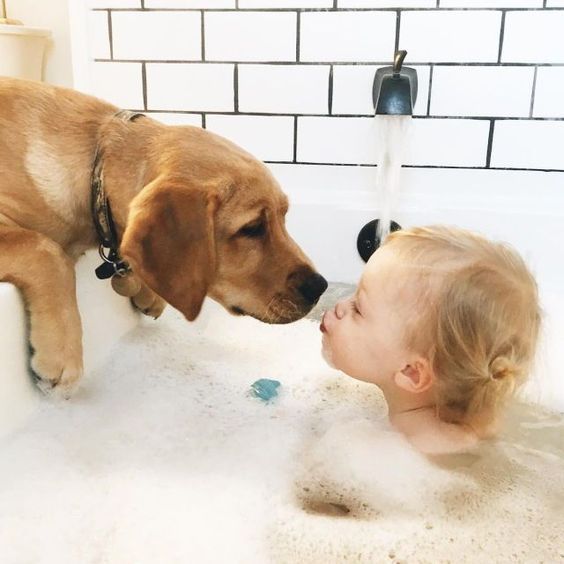
Start training your new dog or puppy as soon as you get him home. Your dog can learn to say please by sitting no matter how young he is. At dinner time before you feed the puppy, have a 2 minute training session. Hold a piece of food over the puppys nose and move it slowly backwards towards his tail so his head comes up and he eventually sits. Click and give him the food as soon as his rear end touches the ground. Dont push his rear end down or pull up on his collar, just let him learn on his own and have a positive experience with the joy of learning. Repeat ten times and then have the puppy sit to receive the remainder of his food from the bowl. At the next meal repeat this, but wait 1 second from the time he sits to give him the food. Say the word sit as soon as you are sure he is going to sit. At the next meal have him sit and wait between 1 and 3 seconds. Gradually increase the time adding 1 second at a time until the dog voluntarily sits and waits for his food and you no longer need to hold the food over his nose. Now that the dog has learned basic self-control around food, the kids can start to help with feeding and training the dog.
Age 5 and under
Children in this age range must be supervised at all times around the puppy and any other dog. By supervision, we mean the YOU ARE RIGHT THERE actively engaging with the child and the puppy, not feeding the baby, doing the dishes or talking on the phone. At this age child can participate in training by dropping a treat on the floor for the puppy every time you click. This teaches the puppy to have self control around even the smallest family members. Children in this age range can also toss a toy for the puppy, but only an adult should get the toy back (by trading for a treat or a better toy).
Age 6-12
Kids in this age range can begin to work independently with the puppy under adult supervision once the puppy understands basic commands and can exercise self-control in waiting for the child to give or toss the treat. Kids can be excellent dog trainers if given the chance. The basic steps in training are: 1) get the behaviour (e.g. hold a treat over the puppys nose until he sits; 2) reward the puppy right away so he knows he did the right thing; 3) give the behaviour a name so the puppy learns to associate a word (or hand signal) with the action. Say sit as the puppy is sitting 20 times and then try saying the word sit before he sits to see if he understands. There is no point in saying a word to a puppy that he doesnt understand. Puppies do not come to us knowing what sit means, they need to hear the words while they are doing the action that we want them to associate with the word. If your puppy is running away from you and you run after him shouting Here Rover, he learns that Here Rover means run away. Lots of people have taught their dogs to run away using this method! Only call your puppy to you when you know he is coming already and then give him a great treat or play a fun game when he gets to you. Kids can learn these simple training principles and be rewarded with a puppy that loves to follow their instructions.
Age 12-16
Older kids can take greater responsibility for the care and feeding of the puppy. They can feed, groom, train and clean up after the puppy. They can let the puppy in and out of the crate. Most children in this age range can handle the puppy independently in a group obedience class (while a parent observes) and can continue as the puppy grows older and stronger. Behaviour specialist Teresa Lewin suggests that a child is old enough to handle a dog independently when the dog respects and obeys the child, when the child can read the dog, predict an impending problem and can intervene appropriately. This will occur at different ages and depends on the maturity of the child, the relationship the child has developed with the dog and the temperament and level of training of the dog.
Some children in this age range will be safe walking the dog in the neighbourhood without adult supervision. This depends on a number of factors. According to Teresa Lewin of Doggone Safe, some basic criteria must be met:
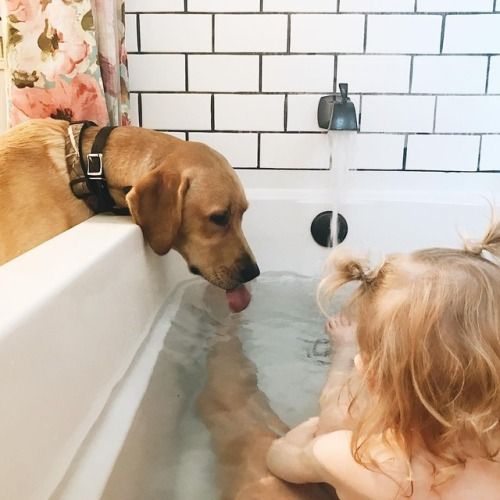
The dog knows how to walk on a loose leash and this behaviour is reliable
The child can read the dogs body language
The child and dog have a mutually respectful relationship
The dog will happily and willingly follow directions from the child
The dog has never shown any sign of aggression toward people or other dogs
The dog does not chase cars, cats, or other animals
The child knows how to interpret situations and take appropriate action.
In addition, the size and strength of the dog relative to the child must be taken into consideration. The child should be strong enough to control the dog if the dog did decide to bolt or pull hard on the leash. Another consideration is the situation in the neighbourhood with respect to other dogs. If there are loose dogs, or dogs that act aggressively on the walk route, then the child should take a different route or not walk the dog without an adult.
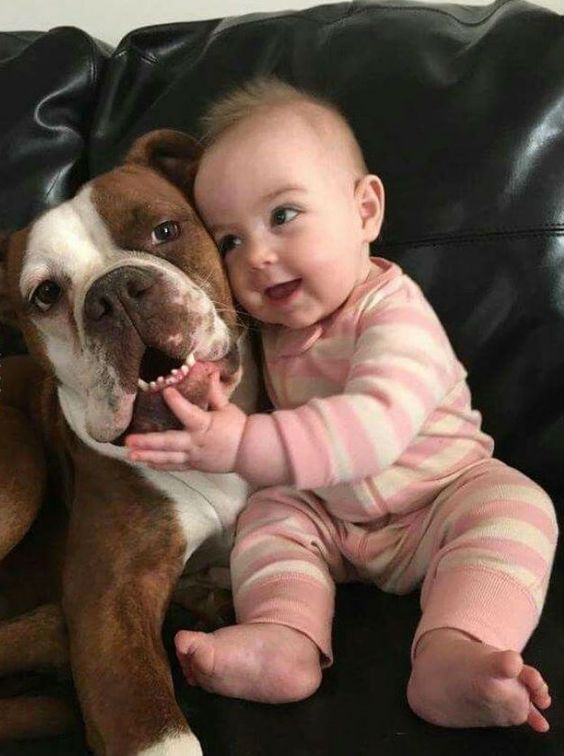
As the child and puppy grow, relationships can change. The puppy may ignore a baby altogether and become intensely interested in chasing an active toddler. A previously calm and placid puppy may suddenly at 6-9 months old start challenging authority and becoming pushy with children it views as playmates. As children become adolescents they begin to smell different to the dog and the dogs behaviour toward the child may change. Parents need to be watching for subtle changes in the dogs behaviour toward the children and continue with training using positive methods throughout the life of the dog. By avoiding punishment, rewarding good behaviour, setting limits (for both kids and dogs), providing kid and dog zones using gates and or crates and involving kids in the care and training of the puppy from the beginning an extraordinary relationship can develop between kids and the dog that will bring joy to the whole family.
Socialize Your Puppy
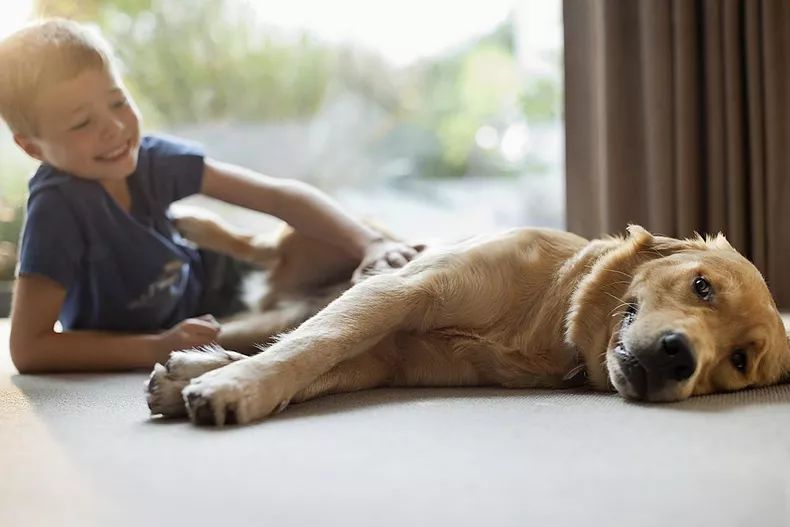
Puppies go through a critical period of development between the ages of about 8 and 16 weeks. They are more likely to learn to accept and be comfortable with a variety of people and situations if they are introduced to them during this time. If you have a new puppy, introduce it to children in a positive way. Make sure it meets different children of various ages in a variety of situations. The children should be well-behaved around dogs and gentle. If your dog has good experiences with kids, it will associate them with good feelings.
Font size:
Interval:
Bookmark:
Similar books «Dog Training For Kids: Tranning Your Dog To Be Kid Friendly»
Look at similar books to Dog Training For Kids: Tranning Your Dog To Be Kid Friendly. We have selected literature similar in name and meaning in the hope of providing readers with more options to find new, interesting, not yet read works.
Discussion, reviews of the book Dog Training For Kids: Tranning Your Dog To Be Kid Friendly and just readers' own opinions. Leave your comments, write what you think about the work, its meaning or the main characters. Specify what exactly you liked and what you didn't like, and why you think so.

